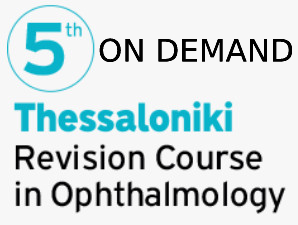Koronis S., Stavrakas P., Balidis M., Kozeis N., Tranos P.
Abstract
Macular edema (ME) represents the most common cause for visual loss among uveitis patients. The management of uveitic macular edema (UME) may be challenging, due to its often recalcitrant nature. Corticosteroids remain the mainstay of treatment, through their capability of effectively controlling inflammation and the associated ME. Topical steroids may be effective in milder cases of UME, particularly in edema associated with anterior uveitis. Posterior sub-Tenon and orbital floor steroids, as well as intravitreal steroids often induce rapid regression of UME, although this may be followed by recurrence of the pathology. Intra-vitreal corticosteroid implants provide sustained release of steroids facilitating regression of ME with less frequent injections. Topical nonsteroidal anti-inflammatory drugs may provide a safe alternative or adjuvant therapy to topical steroids in mild UME, predominantly in cases with underlying anterior uveitis. Immunomodulators including methotrexate, mycophenolate mofetil, tacrolimus, azathioprine, and cyclosporine, as well as biologic agents, notably the anti-tumor necrosis factor-α monoclonal antibodies adalimumab and infliximab, may accomplish the control of inflammation and associated ME in refractory cases, or enable the tapering of steroids. Newer biotherapies have demonstrated promising outcomes and may be considered in persisting cases of UME.
Keywords:
NSAIDs, anti-TNFα, corticosteroids, dexamethasone implant, interferons, macular edema, treatment, uveitis
PMID: 30858697, PMCID: PMC6387597, DOI: 10.2147/DDDT.S166092
Πατήστε εδώ για να δείτε τη δημοσίευση
Source: Pubmed

